At the meeting point at the Grabenhalle in St. Gallen, almost a dozen excited SGEG members were waiting for the upcoming descent into the underworld. We were greeted by Roger Bennet, who introduced us to our hosts: Mrs Zürcher from the St Gallen State Archives and the keeper with the key to access the mysterious tomb tunnel.
He thanked our member Toni Heer for the idea of this excursion and for helping to organise it.

The Grabentunnel is NOT accessible for various reasons and a very rare major exception was made for the SGEG, for which we are very grateful.
The Grabenhalle was once the gymnasium of a demolished school building and is now used as a versatile cultural venue. At the end of the Grabenhalle, virtually behind the scenes of the event venue, there are several inconspicuous closed doors.
Behind them, a steep staircase with grooves and a recessed pulley leads down into the depths…
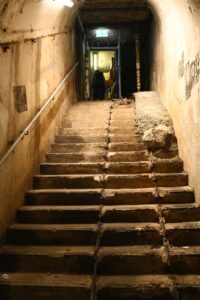
The underground space known today as the ‘Grabentunnel’ was once an open cut through which the single-track line of the St. Gallisch-Appenzell Railway (SGAE) to Rorschach, which opened on 25 October 1856, ran. It used the rare free space provided by the moat of the former town fortifications in the town. Hence the name.
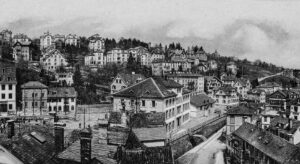
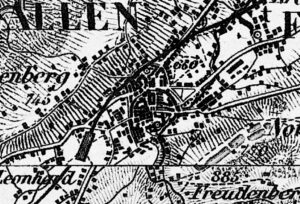
As early as 1880, after the construction of additional railway lines in the St. Gallen area, the station became too small and the single-track line towards St. Fiden was a bottleneck, which was further exacerbated by the planned construction of a line to Romanshorn by the Bodensee Toggenburg Bahn BT.
A long planning period followed, during which the decision was made to extend the single-track line to St. Fiden to double track, which required the construction of a tunnel through the Rosenberg for reasons of space. Construction of the tunnel began in 1906, but due to a number of construction difficulties, the line was not cut through until 1911. The two tracks were put into operation in stages in the spring of 1912.
In addition to the construction of a new railway station, a main post office was also to be built, whereby the proud St. Gallen embroidery industry insisted on prestigious buildings and also supported this financially. Construction of the new railway station began in 1911 and the grand opening took place on 23 December 1913.
It would be interesting to find out more about the conversion steps from the old to the new station, as the track axis was rotated in stages, a new building was constructed and the exit to St. Fiden was changed, which probably led to temporary arrangements.
The former railway line was taken over by the city of St. Gallen, which used it for road construction and a very short section from St. Fiden station to the abattoir (today at the motorway junction next to OLMA) for several decades as a connecting track.
Why the open cut of the old track was not simply filled in, but instead supplemented with an arch to form a tunnel, gave rise to lively discussions among the participants. There is a photo of the vault dated 1912, which would prove that it was not built until after the railway had ceased operations.
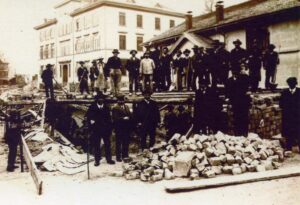
Old postcard; unknown photographer
The fact that the vault and the retaining walls were not built at the same time is still clearly visible today due to the different types of stone and joints. The tunnel cross-section is rather unusual, with the lower part of the former retaining walls clearly sloping outwards.
It is certain that the newly created underground tunnel space was rented by a wine company for several decades. To distribute and transport the barrels, rails were laid in the centre of the tunnel, which are still visible.
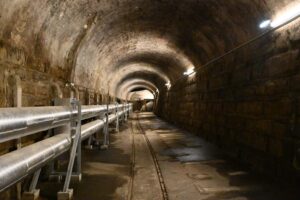
The insulated pipes of the district heating pipes on the side walls are from more recent times. 5 July 2024 Photo: Edi Meier, Bülach
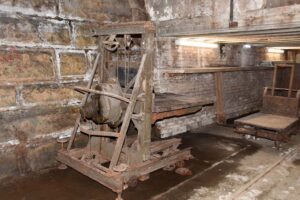
In order to transport barrels down and back up again, a cable hoist was installed in the steep access stairs, probably also with a platform trolley on rails, as evidenced by grooves and a cable pulley to this day. 5 July 2024 Photo: Edi Meier, Bülach
The Grabentunnel turned out to be longer than expected (almost 135 metres). In the rear part there are installations that interrupt the rails, i.e. were installed later.
The fixtures and numbering of the compartments reminded many participants of similar installations in fortresses. Wild speculation immediately began, pointing to a military use: storage or shelters?… There is no documentation of a military use (so far). The spaces formed are comparatively small and with only 6 metres of cover, the use would be very limited. At least you would be hidden and the weak protection would be better than nothing…
As the fire brigade is known to have carried out exercises in the tunnel, the installations could also have been made by them. But why the numbering? The background to the installations remains a mystery and would provide an interesting field for more detailed research…
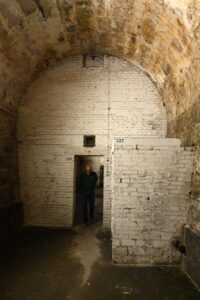
One last big surprise was an inscription in the centre at the top of the tunnel vault, which we only discovered as we were walking right by the entrance. We think we can decipher the name of Sect(tions) Ing(enieur) Pestalozzi. Pestalozzi was a railway engineer for the St. Gallisch-Appenzell railway and had his own engineering office, so both are possible. The vault with the lettering ‘Sect Ing Pestalozzi’ probably belonged to the former overpass over Metzgergasse. It is possible that a short tunnel existed further to the west, in the area of today’s end wall.
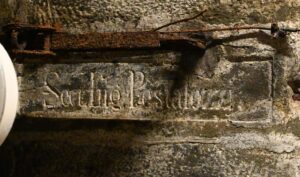
After a short walk through the city of St. Gallen (as strangers to the city, we would have liked to hear a tip or two from the experts present…), we reached the buildings of the St. Gallen State Archives.
There we were able to listen to exciting presentations about their work and the collection. In addition to many documents from state offices, the St. Gallen State Archives hold private archives (e.g. Foto Gross) and industrial archives, in particular parts of the archives of the Altenrhein aircraft and vehicle factory.
Its photo archive was once separated into an aircraft construction section, which is now in St. Gallen, and a railway section, which came into the hands of SGEG via Bombardier. As it turns out, the separation was not exact everywhere and there are also pictures that show both.
This makes the good and complementary co-operation between the St. Gallen State Archives and SGEG, which we were able to deepen with this visit, all the more important.
Our member Toni Heer supports the St. Gallen State Archives in cataloguing these treasures with his technical background, his (railway) specialist and local knowledge and his knowledge of the structure of an archive.
He showed us some examples in a fascinating presentation and provided us with photos and related comments for this report.
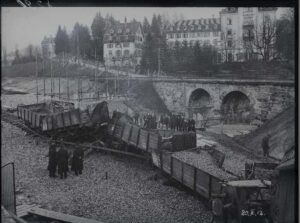
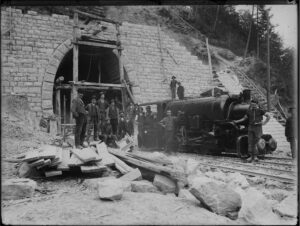
Source DLS, SG State Archives
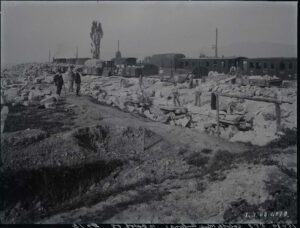
Source DLS, SG State Archives
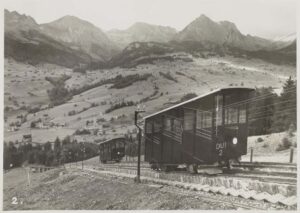
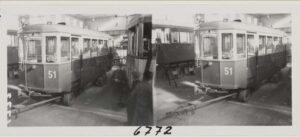
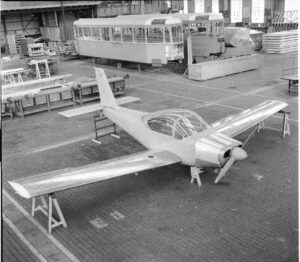
This picture is an example of how difficult it was to separate factory photos of trains and aeroplanes. Source DLS, SG State Archives
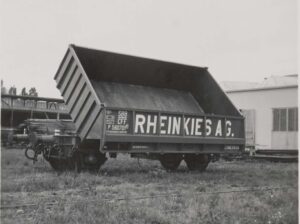
What is special about this photograph is that it is also held by the SGEG and Roger Bennet is pretty sure that he recently had an original negative in his hands when he was cataloguing the FFA collection.
Source DLS, SG State Archives

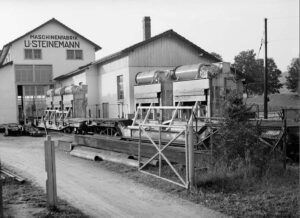

The St. Gallen State Archives (like the Basel State Archives) operate a digital reading room (DLS). Anyone can search for photos and documents in this publicly accessible internet site.
Toni Heer has kindly provided us with a user manual (in German language only), which can be downloaded here (in German language).
A note on our own behalf: the St. Gallen State Archives have digitised many contact copies of FFA railway works photos and wrote ‘negatives lost’ in the comments. We can resolve this here: as a result of the FFA archive separation into rolling stock and aircraft construction, in the vast majority of cases the negative is held by SGEG. The recording (without digitisation) of the FFA negatives is well advanced and can be called up and researched in bahnarchiv.ch.
On a subsequent tour, we were able to view the endless rows of roller cabinets as well as a few tidbits of railway-related originals.
Many thanks to all the hosts who made this varied afternoon possible.
Back to: